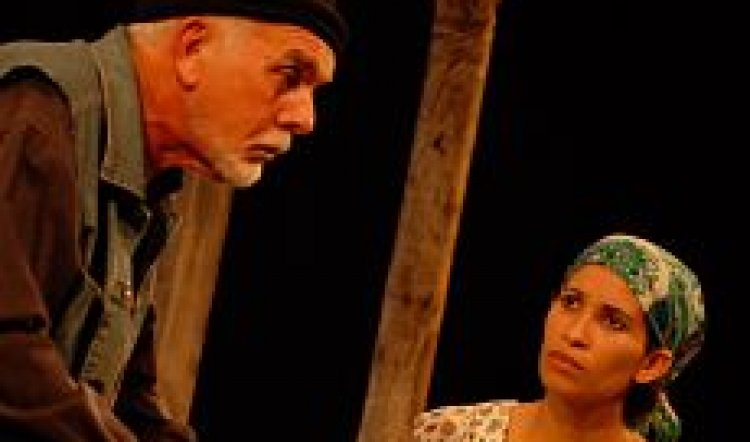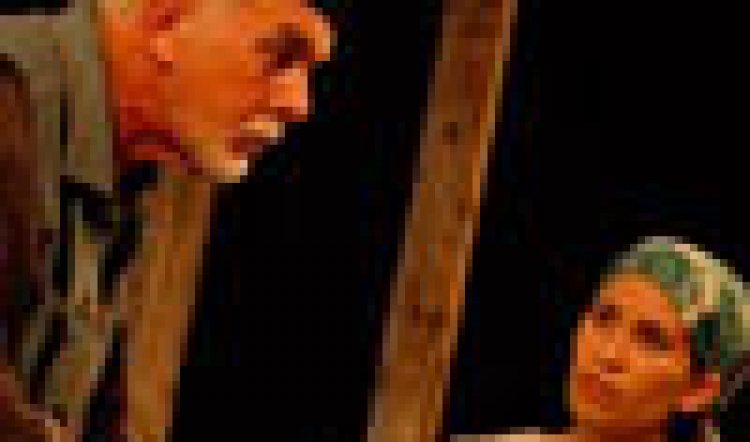
Valley Song
Valley Song, Seymour Centre, 5-16 August; phone: (02) 9351 7940 or http://secure.seymourboxoffice.com.au. Also touring to Glen Street Theatre Belrose 19-30 August; and Riverside Theatres Parramatta, 4-6. Cast: Phillip Hinton, Alexandria Steffensen. Creatives: director Anne-Louise Rentell; design Simon Greer; composer Daryl Wallis; lighting design Martin Kinnane
ATHOL Fugard’s Valley Song was first staged in Johannesburg, South Africa in 1995. Fugard not only directed the production but also played the two male characters: The Author, a white man not unlike Fugard himself; and Abraam Jonkers (known as Buks in this production), an elderly "coloured" man.
Buks and The Author (Hinton) are at odds although not for the obvious reasons of the racial divide. Buks has a sassy young grand-daughter Veronica (Steffenson) who daydreams fiercely of escaping their rural village in the Karoo for the bright lights of Joburg and a singing career. Buks doesn’t want her to go, he fears for her safety and future, not least because her mother did the same thing years before and did not survive. The Author is a worldly-wise man, lately returned from the big city and its successes; he encourages Veronica in her ambitions, much to Buks’ chagrin.
The play was written shortly after the fall of Apartheid in 1992 and the election in 1994 of Nelson Mandela as South Africa’s adored president. To that point Fugard had been the dramatic voice of White anti-Apartheid activism and sentiment: Valley Song was anxiously anticipated. There was a thought that Fugard might have lost his raison d’etre and rage. And Valley Song is more meditation and elegy than overtly political. The characters could be seen to represent past and future, however, in a universal way. Veronica is like any young woman, anxious to make her own way and tugging at the (grand)parental strings; while Buks is a man who finds the planting of pumpkin seeds and the passing of the seasons more than satisfying. As for The Author, he too is looking back as well as encouraging the future.
So far, so symbolic. This production by the Merrigong Theatre Company (based at the Illawarra Performing Arts Centre in Wollongong) rattles around like a pea in a bucket in the Seymour Centre space. It would have suited players and audience alike far better to put it in the more intimate Downstairs black box. As it is, the capital “S” Stage only contributes further to the hushed and reverent style of playing adopted here. It seems the actors and director are only too conscious of being in the presence of a writer described by no less than a New York Times critic as “a man whom many critics have dubbed one of the greatest living English-language playwrights.”

So who are these critics? Name them? It’s an exceedingly overblown description and although Fugard was courageous and his work important in the context of Apartheid South Africa, his plays were more often than not overly polemical, didactic, cardboard and not quite as dramatic as religious tracts. Unfortunately, political correctness and the genuine need to be seen to support the cause rendered the truth untellable back then. At the same time, the power of Sizwe Bansi is Dead and Boesman and Lena is not to be denied, nor their narrative power under-rated, but Valley Song is not in that class.
In this instance, Valley Song might have a little more life and poignancy if it were not approached in such a deferential fashion. When grand-dad solemnly intones lines such as “What is it my child?” it can only bring to mind such immortal moments in theatre as when Mother Superior says to Maria: “What is it my child? What is it you can’t face?”



